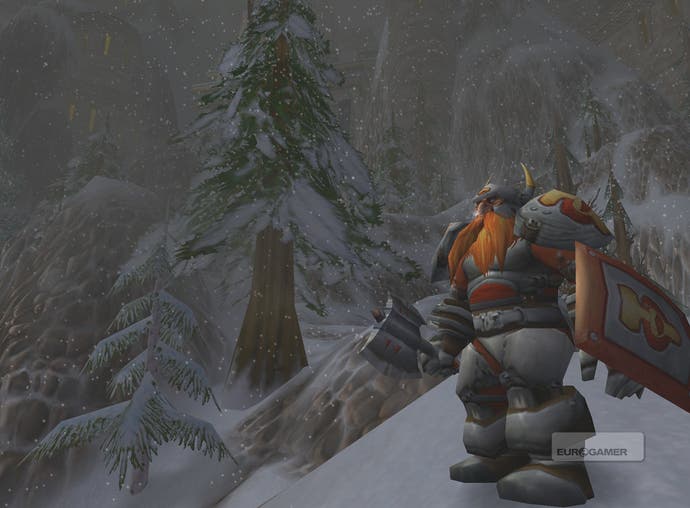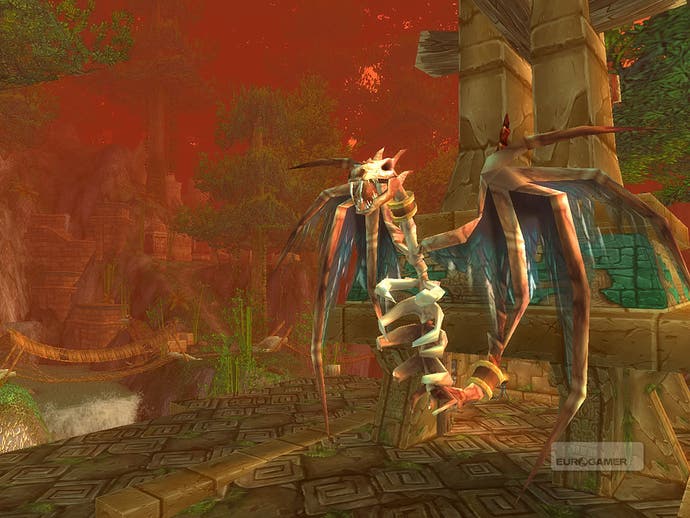The Making of World of Warcraft
Part Two: Five years at the top.
In part one of our exclusive look at how the biggest game in the world was made, key Blizzard developers took us through development from the earliest concepts to the game's launch. In the second and final part this week, we look at how Blizzard reacted to its unexpected success, and how it's changed in the years since.
Before the launch of World of Warcraft one of the game's lead designers, Tom Chilton, estimated that it might sell 750,000 copies - possibly even a million if the team really struck gold. "I don't remember a specific moment when it really hit me," he says now, "but I'd say that within the first six months or so, we realised that this was really going to blow away all of those expectations." It now counts over 11 million subscribed players.
Veterans of the first six months of World of Warcraft know just how badly the company that made it, Blizzard, underestimated the audience for the game. Servers filled to capacity, with immense queues forming as gamers tried to get online to play their characters. Blizzard struggled to get new servers online, but supply couldn't keep up with demand - each new realm that appeared filled up straight away.
"We were surprised by the number of people that jumped in and wanted to play, certainly in those early months, that first year," recalls Blizzard's vice president of creative development, Chris Metzen. "There were a whole bunch of hard lessons to learn."

"It stressed us operationally," admits Chilton. "We didn't plan for that kind of success in terms of our server infrastructure or our data hosting, all that kind of stuff. It really stressed us, and it freaked us out a bit: 'Oh my God, is our game going to collapse under the weight of the number of people trying to play?'"
Meanwhile, the creative team had to try to distance themselves from the operational problems and focus their minds on the updates which players were already demanding. The breakneck pace of the last 12 months of development barely faltered when the game launched, as the team's energies had to be refocused on patches, new dungeons and, crucially, the player-versus-player features they had longed, but failed, to implement for the game at launch.
Chilton, a veteran of Ultima Online, knew that WOW's rudimentary PvP wouldn't cut it for very long. As he'd expected, players learned to make their own fun - largely in the form of giant battles which raged between the towns of Southshore and Tarren Mill, turning the Hillsbrad Foothills zone into a no-go area on PvP servers - but his plan for PvP would move it from open-world events to instanced Battlegrounds, in line with the team's vision for "Battlefield 1942 meets Warcraft III" combat.

The decision to launch Battlegrounds which were separated from the game world was controversial - but Chilton is adamant that it was right. "Instanced battlegrounds have provided a much better experience for players than non-instancing would have," he insists. "Having come from working on Ultima Online, which was entirely non-instanced, having experienced what can be compelling about non-instanced PvP there - that also taught me a lot of the problems that go along with it.
"There is what I would call a fantasy of world PvP - raging world battles that are meaningful, players taking control of stuff and so on," he says. "What I have found over the years is that that fantasy is really cool from a very high-level perspective, when you're looking at the game from a god point of view. But actually making that fantasy work, making that fantasy play out in a way that each individual person feels like it was satisfying... That's not something that anybody has solved yet. It wasn't something that we thought that we were going to be able to solve.
"We felt like instancing was the only way to make sure that the fights were fair, because what happens in that fantasy of world PvP is that the fights are never fair. Ultimately, that ends up breaking the experience for PvP in general."








